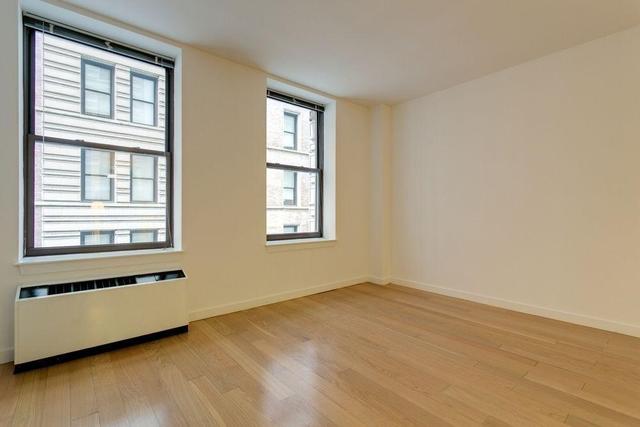
What is DOM in Real Estate?
By: ROS Team
In the dynamic world of real estate, where properties change hands and dreams to find homes, a crucial factor comes into play: DOM. This acronym holds significant weight in the realm of property buying and selling, influencing negotiations, perceptions, and the essence of transactions.
We will explore the DOM definition, delve into its multifaceted impacts, and understand how it guides the decisions of buyers, sellers, and industry experts alike.
What does DOM mean In Real Estate?
At the core of every real estate transaction lies a vital measure called “Days on Market” or DOM. This numerical value represents the duration a property has been listed, patiently waiting for potential buyers to make their move.
Simply put, DOM signifies the number of days between listing and contract or sale. This seemingly straightforward metric holds significant implications, offering valuable insights into the property’s appeal, market trends, and the strategies employed by both sellers and buyers.

DOM isn’t merely a statistic. It serves as a dynamic indicator, revealing the journey of a property in the marketplace. By capturing the attention span of potential buyers and showcasing the efficiency of marketing efforts, it reflects the delicate balance between demand and supply.
Understanding DOM is like peering through a window that unveils the pulse of real estate transactions. It sheds light on how swiftly properties transition from “For Sale” to “Sold” and shapes decisions made by all parties involved.
Factors Influencing DOM
The journey from listing to closing isn’t always linear, and the number of days a property spends on the market is influenced by many factors. These factors can be broadly categorized into three key areas: property-related factors, market-related factors, and pricing strategy.
1. Property Related Factors:
- Location: The adage “location, location, location” holds true in real estate. Properties situated in desirable neighborhoods or with convenient access to amenities tend to spend fewer days on the market.
- Condition and Features: The overall condition of the property, its age, and the presence of modern features can impact how appealing it is to potential buyers.
- Size and Layout: The size of the property and its layout in terms of bedrooms, bathrooms, and living spaces can influence its marketability.
- Curb Appeal: The initial impression a property makes can significantly affect the speed of its sale. Well-maintained exteriors and attractive landscaping can expedite the process.
2. Market Related Factors:
- Seasonal Trends: Real estate markets often experience seasonal fluctuations. Spring and summer tend to be busier due to favorable weather and families’ desire to move during school breaks.
- Supply and Demand: When demand outweighs supply, properties tend to sell more quickly. Conversely, an oversaturated market can lead to longer DOM.
- Local Economy: The local economy’s health can impact buyers’ willingness and ability to invest in real estate.
3. Pricing Strategy:
- Correct Pricing: Pricing a property accurately from the outset can significantly impact its DOM. Overpricing can deter potential buyers, leading to extended time on the market.
- Price Adjustments: If a property isn’t attracting interest, strategic price adjustments can breathe new life into the listing and attract a wider range of buyers.
Significance of DOM for Sellers
For sellers, DOM serves as a valuable compass, providing insights into their listing strategy’s effectiveness and the market’s pulse.

1- Understanding Buyer Psychology
Extended DOM can signal to potential buyers that a property might be overpriced or have underlying issues. Buyers may question why others haven’t snapped up the property already.
The longer a property remains on the market, the more critical buyers might become in their inspections, potentially leading to requests for deeper price reductions or repairs.
2- Pricing Competitively
High DOM can be an indicator that a property is priced above its perceived value. In response, sellers might consider adjusting the price to align with market expectations.
A well-priced property tends to generate more interest and can lead to quicker offers, thus reducing DOM.
3- Stale Listings
Properties that languish on the market for an extended period can develop a “stale” reputation. Buyers might wonder if others have spotted something undesirable about the property.
A stale listing can lead to lowball offers as buyers perceive the property as being less desirable due to its extended time on the market.
Significance of DOM for Buyers
DOM also holds significance for prospective buyers, granting them a lens through which to interpret the real estate landscape and potentially leverage their position.

1- Bargaining Power
Properties with longer DOM might offer buyers a stronger negotiation position. Sellers might be more motivated to negotiate lower prices or favorable terms to finally close the deal.
Buyers can use extended DOM as a point of negotiation, especially if they can demonstrate that other potential buyers have hesitated.
2- Due Diligence
Extended DOM prompts buyers to perform more thorough due diligence. They may scrutinize the property’s history, inspect it more meticulously, and explore reasons for its extended market presence.
This extra diligence can be advantageous, helping buyers avoid potential pitfalls that might not have been immediately apparent.
3- Potential Opportunities
Properties with extended DOM might have hidden potential that other buyers have overlooked.
Savvy buyers could find themselves acquiring a gem that simply needed a fresh set of eyes to appreciate its value.
Real Estate Agents and DOM
Amidst the complexities of the real estate market, skilled agents stand as invaluable guides, wielding their expertise to interpret and harness the power of DOM to benefit their clients.
Role of Agents:
- Sellers’ Advisors: Real estate agents use their experience and market knowledge to advise sellers on the optimal listing price and marketing strategy. This advice is informed by DOM data, helping sellers avoid the pitfalls of overpricing.
- Buyers’ Educators: Agents assist buyers in understanding the significance of DOM in the context of their desired properties. They provide insights into negotiation strategies and help buyers make informed decisions based on market trends.
Strategies to Reduce DOM

1- Effective Staging
Properly staging a property enhances its visual appeal, making it easier for potential buyers to envision themselves living there. Well-arranged furniture and decor can create an emotional connection that accelerates decision-making.
2- Professional Photography
High-quality, professionally-taken photos showcase the property’s best features. In the digital age, where first impressions are often made online, striking visuals can entice more prospective buyers to schedule showings.
3- Regular Maintenance
Addressing minor repairs and upkeep issues before the listing can prevent potential buyers from being deterred by visible flaws. A well-maintained property suggests that it has been cared for, reducing concerns about hidden problems.
4- Responsive Marketing
Utilizing online platforms and social media allows properties to reach a wider audience quickly. Promptly responding to inquiries and scheduling showings help maintain interest and momentum.
Interpreting DOM in Different Markets
DOM’s impact isn’t uniform across all real estate markets; it varies based on factors such as location and the market’s overall health.
1- Urban vs. Rural Areas
In urban areas, properties tend to move faster due to higher demand and limited supply. In contrast, rural areas might experience longer DOM due to a smaller pool of potential buyers.
2- Buyer’s vs. Seller’s Market
In a buyer’s market (where supply surpasses demand), properties might spend more time on the market as buyers have more options to choose from. In a seller’s market (where demand outpaces supply), properties tend to sell more quickly.
Potential Pitfalls and Misconceptions
While DOM holds great significance, it’s important to avoid falling into some common traps and misconceptions.
1- Overemphasis on DOM
Relying solely on DOM as an indicator of a property’s value can be misleading. Other factors such as property condition, location, and features also play critical roles in determining a property’s worth.
2- Drastic Price Reductions
While adjusting the price strategically can indeed reduce DOM, hasty and drastic price reductions can signal desperation to buyers. Finding the right balance between reducing DOM and protecting the property’s value is crucial.
3- Ignoring Other Metrics
DOM is just one piece of the puzzle. To form a comprehensive understanding, sellers, buyers, and agents should also consider comparable sales (comps), current market conditions, and the property’s unique attributes.
FAQs
Why is DOM Important in Real Estate?
DOM, or Days on the Market, is an important metric in real estate because it can tell you how long a property has been for sale and how quickly it is likely to sell. This information can be helpful for both buyers and sellers.
What is DOM on the MLS?
DOM, or Days on the Market, is a metric that is used to measure how long a property has been listed on the Multiple Listing Service (MLS). It is calculated from the date the property is first listed to the date it is sold or taken off the market.
DOM Real Estate: Final Thoughts
Days on Market, the seemingly simple numeric value, holds great significance in the realm of real estate. It serves as a compass for sellers, buyers, and agents to navigate the intricate landscape of property transactions. Like a gauge, DOM captures the ever-changing tides of market dynamics, providing valuable insights into property desirability, pricing strategies, and negotiation tactics.








